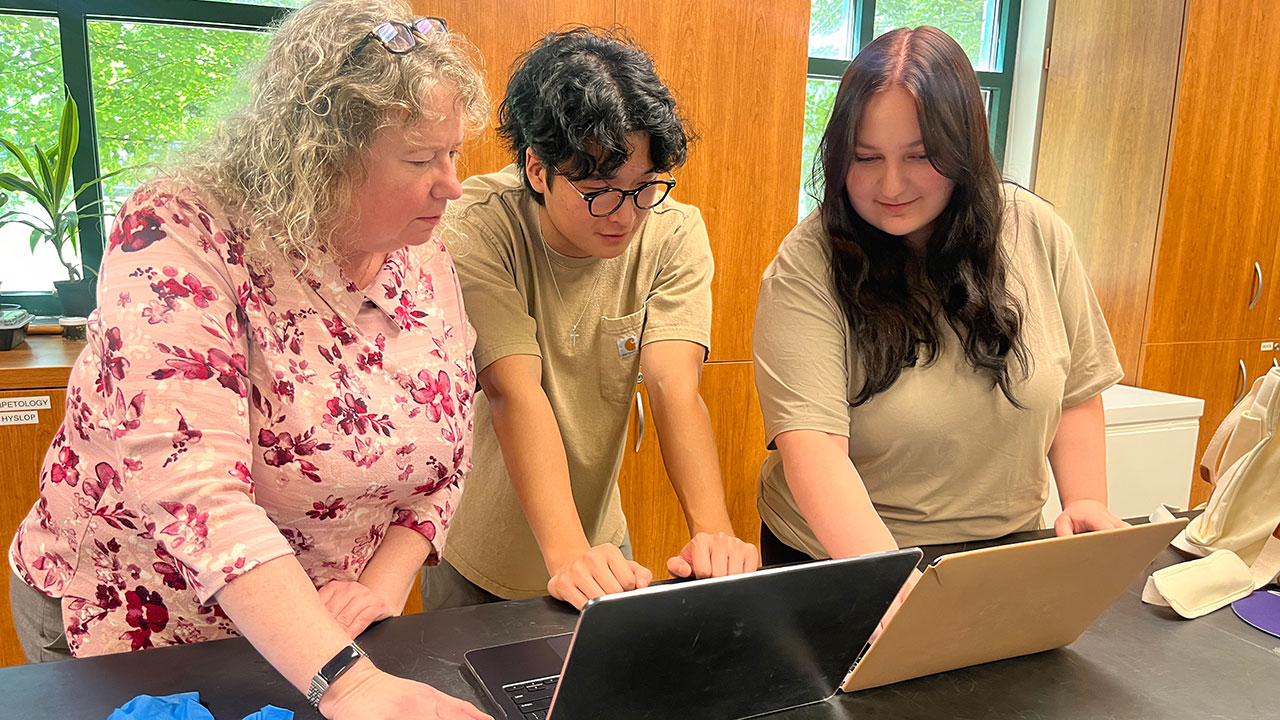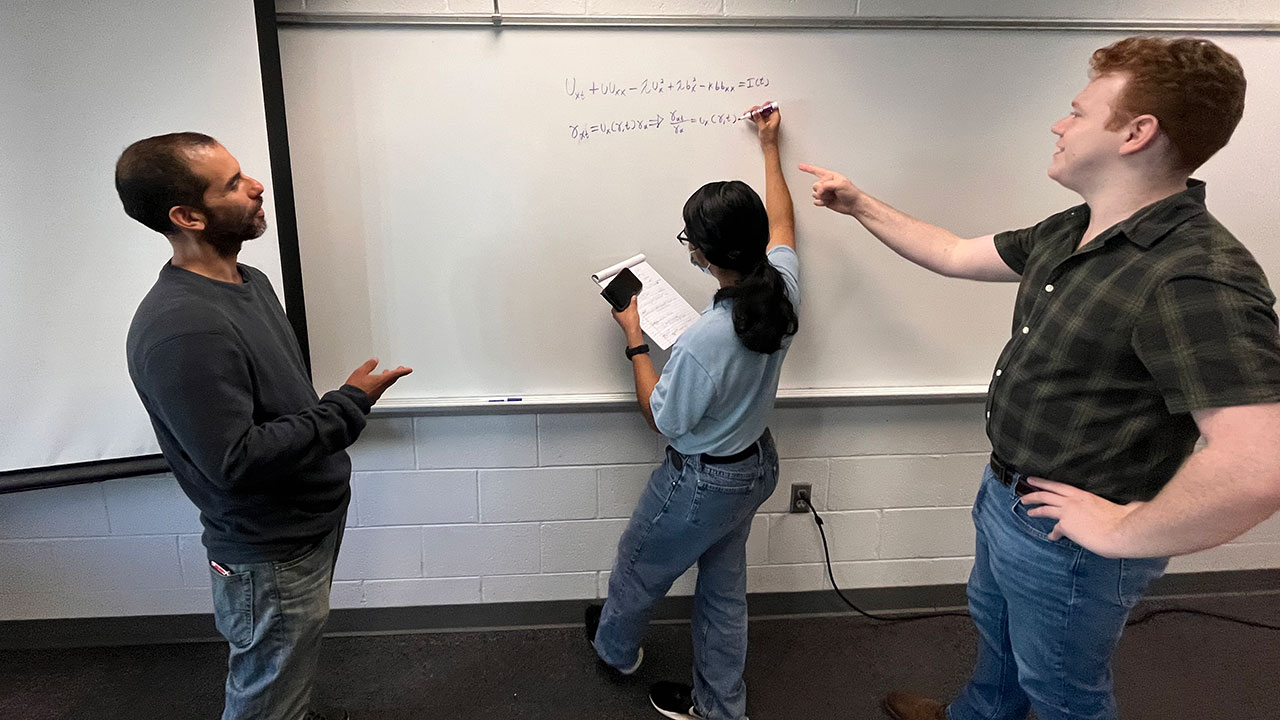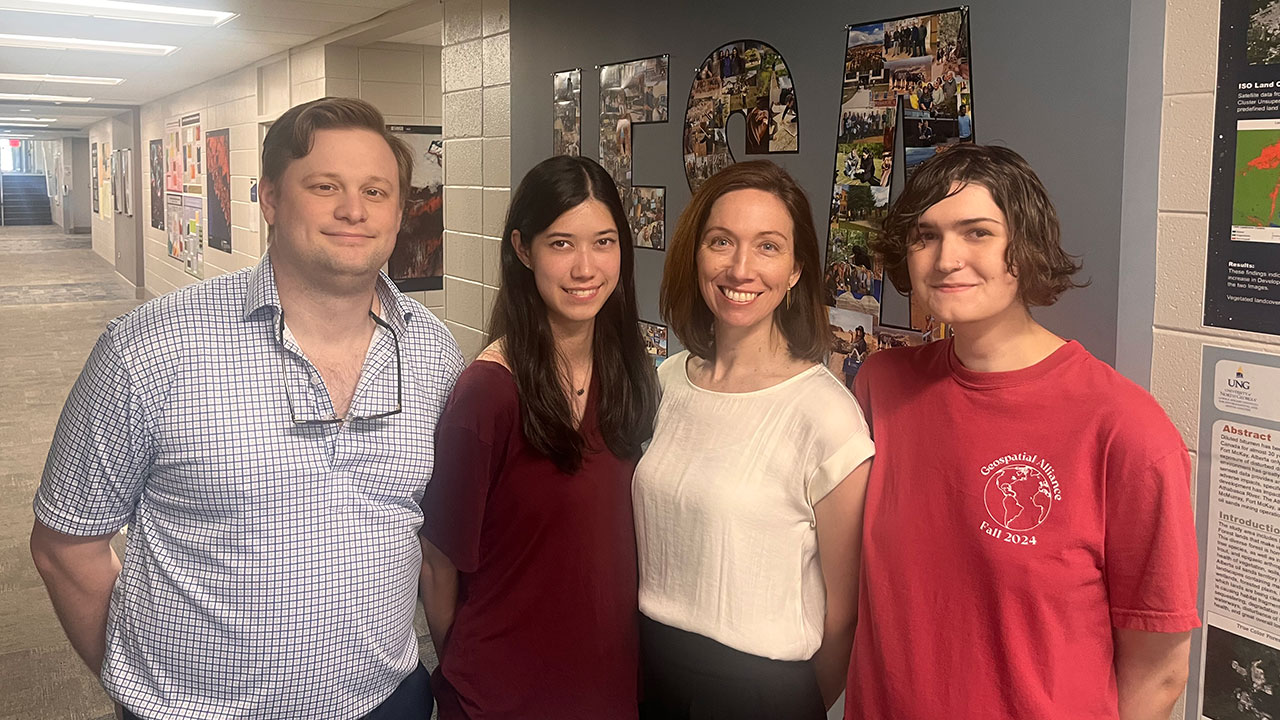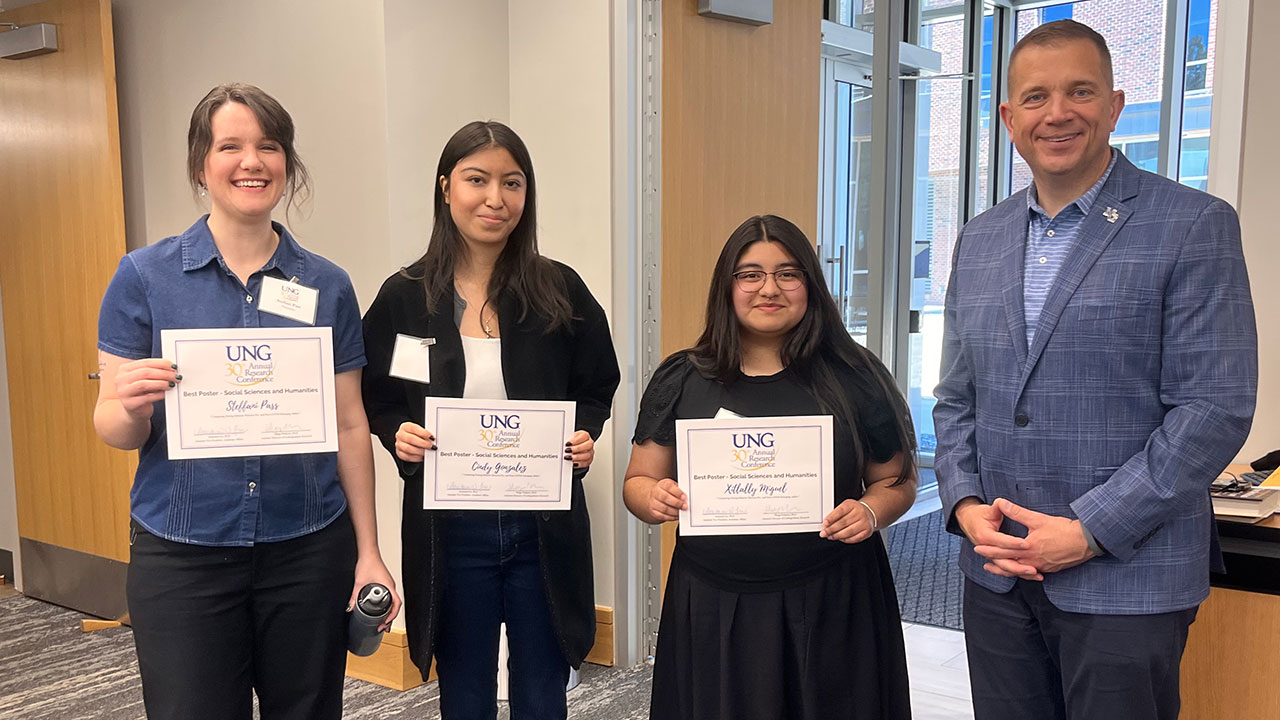Three students present at Capitol

Three students from the University of North Georgia (UNG) presented their research at Posters at the Capitol in Atlanta on Feb. 20. Twenty-four projects from 11 different universities were presented at the yearly event put on by the Georgia Undergraduate Research Collective (GURC) to promote undergraduate research.
"Posters at the Capitol is a great opportunity to highlight all the amazing work our students do in front of an influential audience," Dr. Diogo Pinheiro, assistant director for UNG's Center for Undergraduate Research and Creative Activities and associate professor of sociology, said. "The students representing UNG had the opportunity to present the results of all their hard work to state legislators, policymakers and other members of the public. And UNG was well represented there, as our students and their projects received a lot of attention. I look forward to next year's event and to building on this year's success."
The three students who shared their work were:
- Atticus Tomcho and Mary Dickens mentored by David Patterson and Christopher Seminack: "Late Pleistocene ecosystem evolution in southeastern North America: A transdisciplinary approach using fossil American alligator enamel isotopes."
- Lauren Bowman: "Oral histories of enslaved lifeways in the South Carolina Lowcountry."
Bowman, a senior pursuing a degree in film and digital media, was able to create her poster through an interdisciplinary Faculty Undergraduate Summer Engagement grant. She, in partnership with Dr. Robin O'Day, created a 15-minute documentary capturing the cultural landscape of the Santee Delta with an emphasis on the African descendant experience. O'Day is an associate professor of anthropology.
"My favorite part of the experience was being able to present to a broader audience. Meeting members of the public who also believe in sharing these stories helped reaffirm our commitment to continue expanding our documentary film," the Statham, Georgia, native said.
The presenters were chosen from a competitive pool of applicants across the state.



